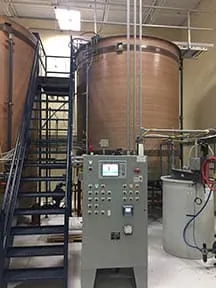

As a national environmental consulting and contracting firm specializing in managing hazardous substances, SCS Engineers is helping our clients now. Start by reading The Environmental Dangers of PFAS and Technologies for Removing Them, published in WasteAdvantage magazine for use in the solid waste industry and other industrial applications in support of EPA’s Action Plan.
On February 14, 2019, the U.S. Environmental Protection Agency (EPA) Acting Administrator Andrew Wheeler announced EPA’s Per- and Polyfluoroalkyl Substances (PFAS) Action Plan. The PFAS Action Plan is in response to public interest and input the EPA has received over the past year. EPA’s Action Plan identifies both short-term solutions for addressing these chemicals and long-term strategies for states, tribes, and local communities need to provide clean and safe drinking water to their residents and to address PFAS at the source. These actions include:
Contact a local SCS professional at or visit our website.
ButterBuds® Food Ingredients supply their concentrated dairy flavors to consumers and food businesses all over the world. ButterBuds called in SCS Engineers to help them lower the concentrations of fats, oils, and grease (FOG) in their wastewater.

Fats, oils, and grease (FOG) cause wastewater issues for food ingredients and food manufacturers. These companies must keep an eye on their compliance schedules to keep ongoing production from being disrupted.
For ButterBuds, SCS Engineers began by carrying out a multi-level review of the wastewater pretreatment issues. We conducted a process water balance, prepared a process flow diagram, measured process flows, collected/analyzed wastewater samples, evaluated chemical treatment testing and maintained communications with City staff.
The SCS team prepared engineering design drawings and specifications for the wastewater pretreatment system. We also helped ButterBuds staff with the selection of wastewater pretreatment equipment, bidding, construction, and start-up, as well as resolving operational issues.
The wastewater treatment equipment was housed in a separate building away from the food ingredient processes. This requirement meant the wastewater discharge piping had to be installed underneath the existing building using directional drilling to minimize any disturbance to production.
Outcomes and benefits